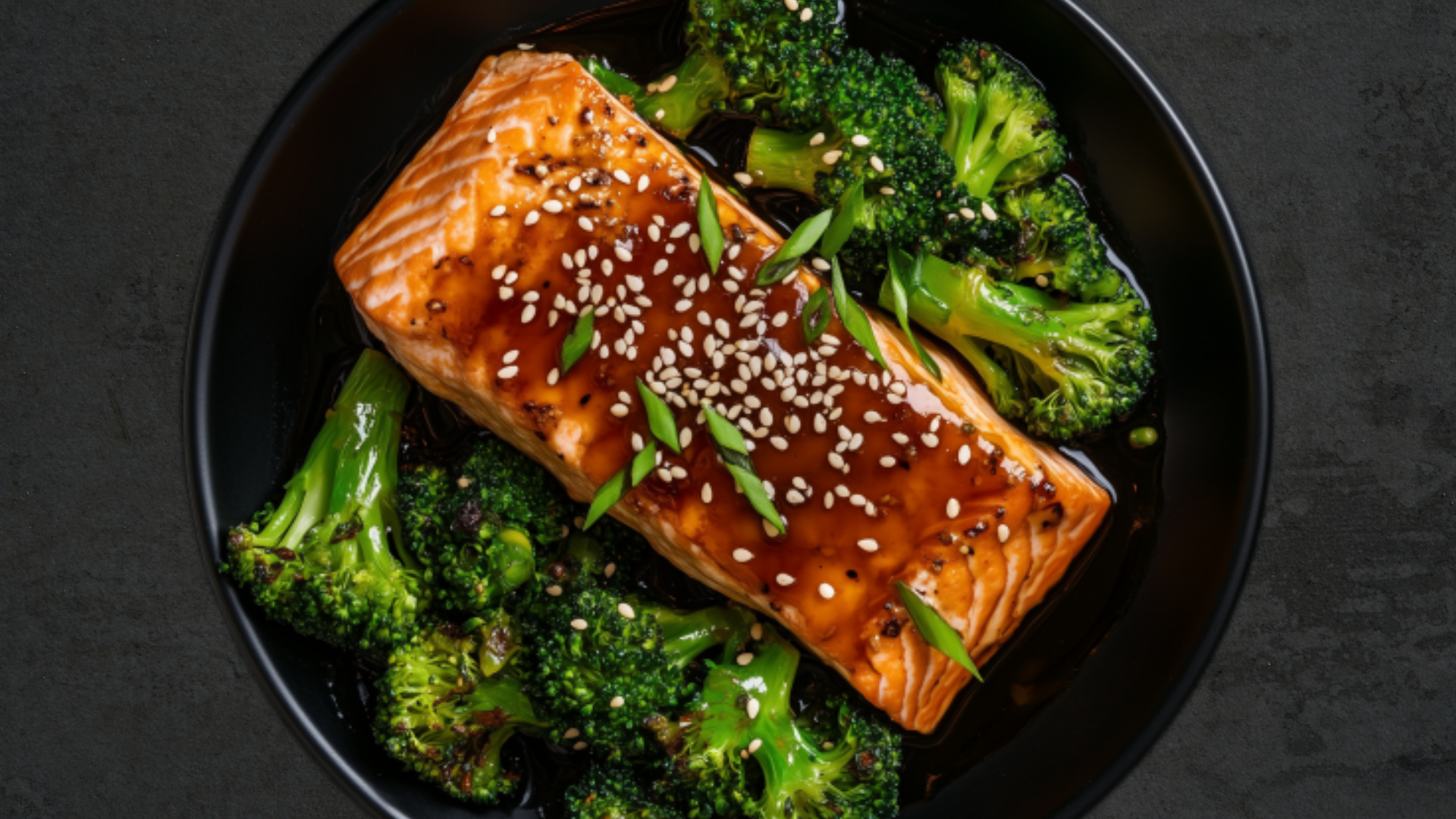The
Daily
Fix
Rest
Ginger Butter Salmon with Sesame and Garlic Broccoli
Objectively the Best Exercise for the Aging You

Rest day
Salmon fillets steamed in foil with butter, soy, ginger, and garlic, then finished with sesame seeds and scallions—served with tender garlicky broccoli.
What barbell exercise is the most important for the aged?
Enjoy the recovery time, or make-up anything you missed from last week.
Ingredients
For the Salmon:
6 oz salmon fillet
1 Tbsp butter, divided
1 Tbsp soy sauce
½ tsp freshly grated ginger
½ clove garlic, minced
1 tsp sesame seeds
1 Tbsp sliced scallions
For the Broccoli:
1 cup broccoli florets
1 Tbsp butter
½ clove garlic, minced
½ tsp freshly grated ginger
Salt and pepper to taste
Macronutrients
Protein: 35g
Fat: 35g
Carbs: 6g
Preparation
Preheat a grill, griddle pan, or oven to 400°F (200°C). Cut a sheet of foil large enough to wrap the salmon.
Place ½ Tbsp butter in the center of the foil. Lay the salmon (4 oz) on top. Mix together soy sauce (1 Tbsp), ginger (½ tsp), and garlic (½ clove). Pour over the salmon. Dot the remaining ½ Tbsp butter on top.
Wrap the foil tightly around the salmon to form a sealed parcel. Place on the grill, griddle, or in the oven, and cook for 10–12 minutes, depending on thickness.
While the salmon cooks, prepare the broccoli. Steam or boil broccoli (1 cup) until just tender, about 4–5 minutes. Drain.
In a small pan over medium heat, melt butter (1 Tbsp). Add garlic (½ clove) and ginger (½ tsp), sauté until fragrant, about 30 seconds. Toss the broccoli into the pan and coat well. Season with salt to taste.
Once the salmon is cooked through, open the foil parcel carefully and sprinkle with sesame seeds (1 tsp) and sliced scallions (1 Tbsp).
To Serve: Plate the salmon with its sauce from the foil. Serve with a generous side of garlicky broccoli.
Lon Kilgore PhD argues that age-related strength loss—especially in sedentary individuals—is a major contributor to frailty, loss of independence, and even premature mortality. Drawing from data in fourteen research studies, he shows that leg strength declines earlier and more steeply than strength in other regions, making lower-body training especially critical. Despite the common misconception that back pain or knee pain should discourage exercise, Kilgore emphasizes that targeted movement can actually reduce discomfort and preserve function when done with appropriate care.
Kilgore’s argument isn’t just about fitness—it’s about maintaining the physical autonomy needed for a high quality of life. He urges medical and fitness professionals to rethink outdated assumptions about aging and exercise, and to advocate for strength training, especially squatting, as a non-negotiable part of aging well

FRIDAY 250523